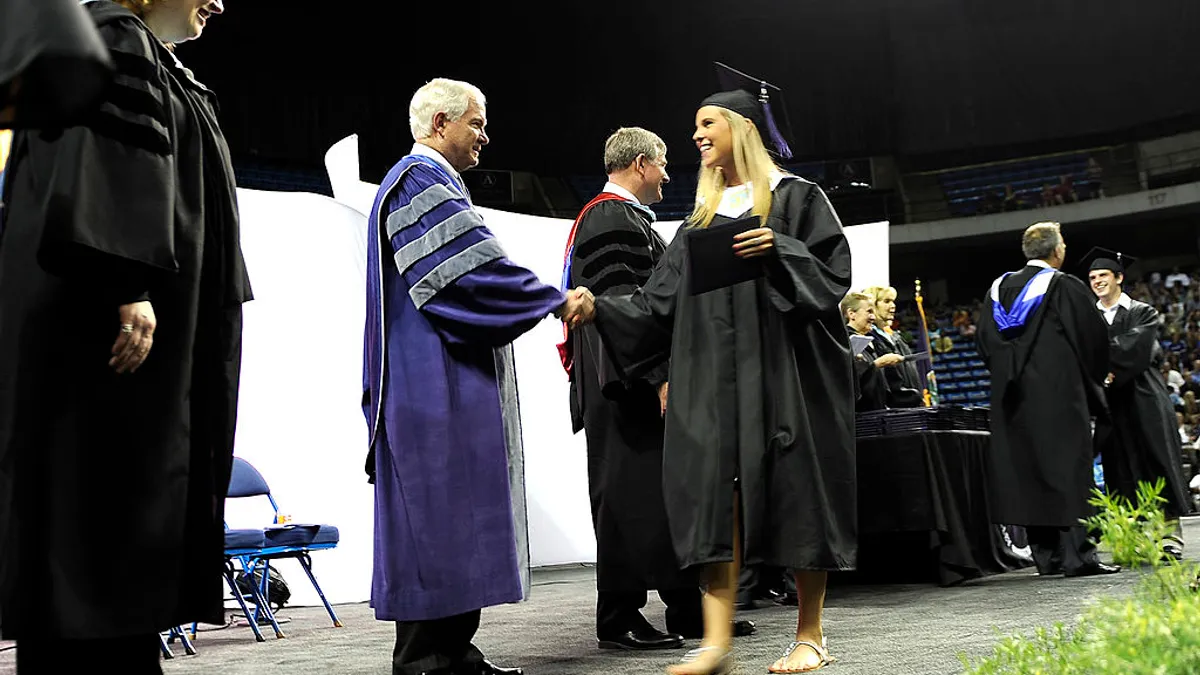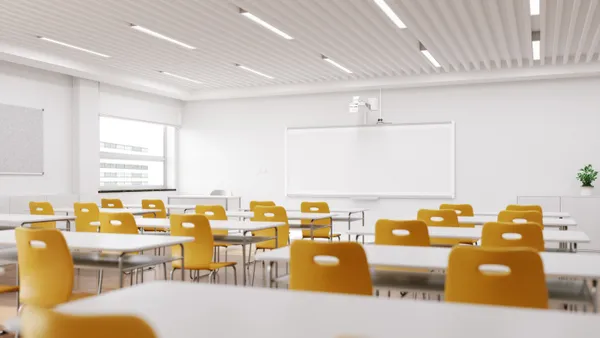Dive Brief:
- In 46 states, proficiency standards for high school graduation are not aligned with entrance requirements to their flagship public institutions, according to a new study from the Center for American Progress.
- The report holds California as an extreme example with nearly all collegiate entry requirements in subjects like mathematics, English, foreign language and art exceeding the graduation requirements of California public school systems. Some officials say the disparity creates a significant breakdown for states seeking to establish strong workforce development pipelines. “A real phenomenon we’re now seeing is that we have more and more students with a diploma, but we also know — look at test scores over the last few years — we’re not graduating more students who are proficient,” said Laura Jimenez, Center for American Progress Director of Standards and Accountability.
- The report recommends secondary school districts to increase the rigor with additional courses in advanced math, English, civics and foreign language to be complemented with earned credits in technical or professional fields. Delaware and Louisiana, according to the report, are the states with the least amount of ground to cover in eliminating these disparities, thanks to articulation agreements wherein students can earn college credits while in high school, earn technical credits, or otherwise receive a well-rounded education.
Dive Insight:
Seemingly, the simple solution would be for colleges to offer more articulation agreements with local high schools to more easily ensure the alignment of graduation and entry requirements. The partnership between districts and institutions may have to shift to remain loyal to the notion of giving poor and working-class students more access to higher education but requiring secondary districts to be more active in providing college-readiness resources, like New Jersey's 2+2+2 articulation program. In some cases, this could mean extending the school day, increasing GPA or standardized test score requirements for graduation, or potentially replacing community service requirements with tutoring or academic credentialing mandates.
But differing guidelines from industry, accreditators and the federal government can make it difficult to determine exactly to which standards students should be adhering. In places like Dallas, local employers work directly with the local districts and neighboring colleges to help train students in the skills they need. And community colleges, in particular, are good at collaborating more closely with both the K-12 system and industry to help bridge gaps.
With workforce needs varying from state to state, it can be difficult to iron out exactly what skills are needed for graduates who may find employment elsewhere (though research shows geographic migration is on the decline, and increasingly, where students attend high school determines where they go to college and where they will begin their lives).
As federal lawmakers and regulators look more closely at post-graduate outcomes, there remains a disincentive for schools to enroll marginal students in large numbers. The same is true of encouraging students to pursue the liberal arts, which some perceive will leave them lacking a tangible proficiency in a given field, despite growing reports that even technical occupations require traditional liberal arts competencies. College leaders may have more latitude to consider what a credit hour really means and how to provide the best education to students as Congress looks to re-define the credit hour, however, this could lead to more complications in ensuring some consistency of standards from the cradle to the workforce.






 Dive Awards
Dive Awards






